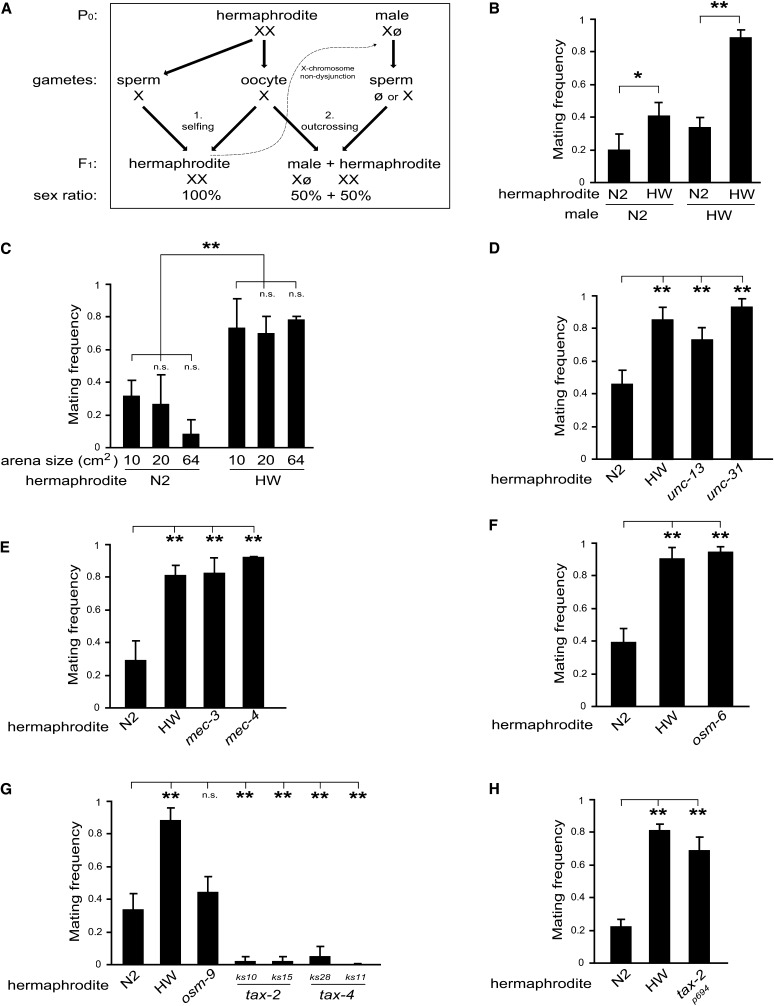Figure 1.
Genetic variation in C. elegans hermaphrodite mating frequency. (A) C. elegans life history schematic depicting alternative reproductive strategies of hermaphrodites: (1) self-reproduction vs. (2) outcrossing with males. Zygotes with two X chromosomes develop as hermaphrodites, whereas zygotes with only one X chromosome develop as males. Because males have only one X chromosome (ø signifies the absence on an X), 50% of their progeny are male. Males can also be generated by nondysjunction of an X chromosome during hermaphrodite meiosis (depicted by dotted line) at a low rate (∼10−2–10−3). (B) Mating frequency of single N2 and HW wild-type hermaphrodites paired with single males. Mating frequency is defined as the proportion of pairs tested bearing male F1 progeny, indicative of mating (see Supporting Information, File S2). (C) Hermaphrodite mating frequency of N2 and HW across three arena (i.e., plate) sizes. The standard condition is 20 cm2 in all other experiments. (D–H) Hermaphrodite mating frequency of N2-derived mutants defective in (D) neurotransmission (unc-13) or neurosecretion (unc-31), (E) mechanosensation to gentle touch (mec-3 and mec-4), (F) ciliated sensory neuron function (osm-6), (G) TRPV channel (osm-9) or cGMP-gated (tax-2 and tax-4) channel–mediated sensory transduction in chemosensory neurons, and (H) cGMP-gated channel (tax-2) sensory transduction in only four sensory neurons. Unless otherwise noted, HW males were used as the tester strain to dissect hermaphrodite mating frequency. Bar graphs depict mean ± SEM of multiple trials. *P < 0.05 and **P < 0.01 by permutation test stratified by trial. n.s., not significant.

